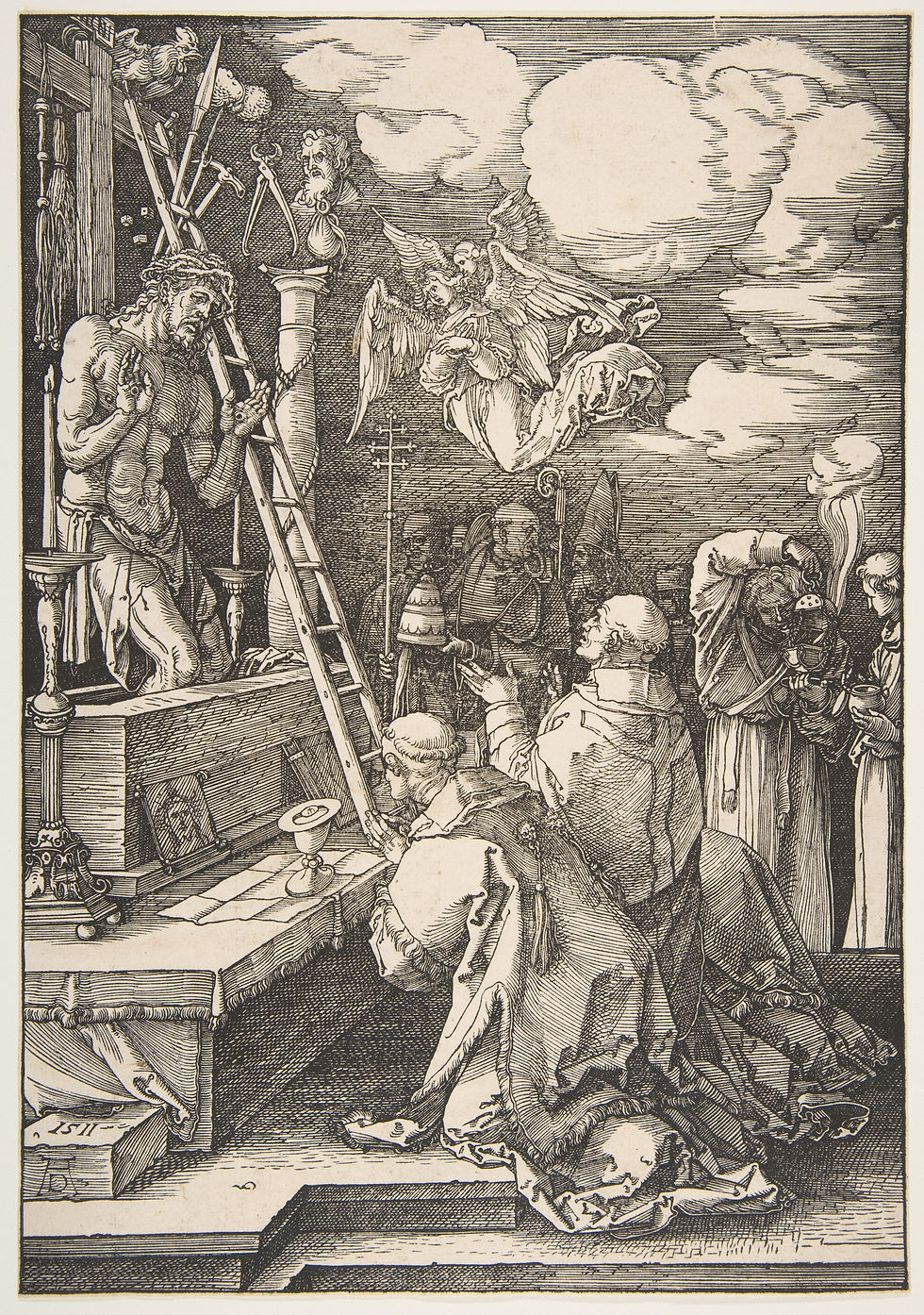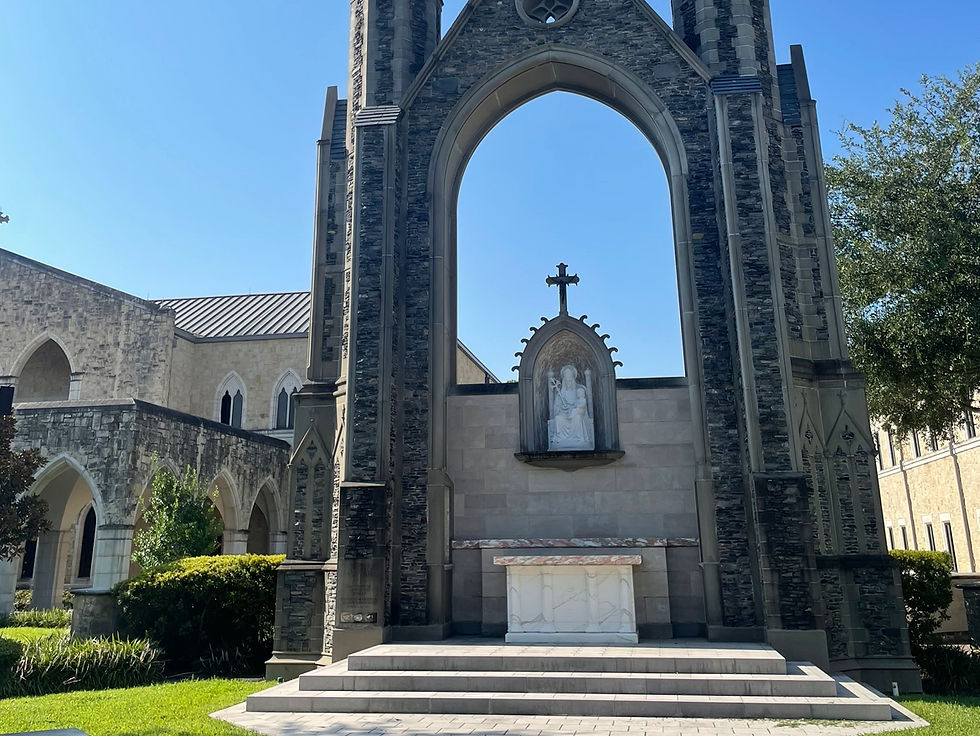Beauty of Ancient Days
- Kelvin Sandigo
- Oct 3
- 4 min read

Imagine waking up tomorrow morning exactly 575 years in the past. The Julian calendar was still in force then, rendering the date Sunday October 4, 1450. Naturally, you'd be looking for a church to hear Mass and if you happened to have also traversed the Atlantic you might see something like this.
The director of this production (who also portrayed the part of celebrant) was Fr. Anders Piltz, OP, professor of Latin at Lund University in Sweden. In his introduction Fr. Piltz describes the strokes employed in painting this moving picture:
Five hundred years ago, the universe seemed much more understandable than it does for us. All of existence was framed by a number of ceremonies and behavioral patterns which were a matter of course for people at the time. And the most important of them was the Holy Mass - that ring of charged words and actions which surround the central mystery in the Christian faith: That Jesus becomes man anew in the creatures of bread and wine.
We have reconstructed a High Mass from 500 years ago in an ordinary Swedish parish church, namely in Endre Church, one mile east of Visby in Gotland. We imagined ourselves to be participating in this high mass on an autumn Sunday in the middle of the 15th century. It is local people who are participating in clothes typical for the time, and we have tried as much as possible to reconstruct [something to do with (worship) services] in the Diocese of Linköping at that time - since Gotland belonged to that diocese.
The service is conducted in an incomprehensible language, a language incomprehensible to the people: Latin. Because church services at the time were not considered a medium for communicating information, except for silent prayers. Just as one cannot describe what is fascinating about a melody or a sight, one shouldn't be able to understand or describe the central mystery of the universe. The congregation waits for the central moment, when the bread and wine shall be transformed into the body and blood of Christ.
The priest was helped by a chorister, perhaps the [experienced?] youth whom [his soul has discovered?] and who with time would be sent to Linköping in order to attend the cathedral school. Songs, mostly from the Bible, were sung by the local cantor. We don't know exactly how the music went in the medieval churches. Maybe Endre Church had a specific order which required a qualified cantor like the one we shall see here.
The Sunday service began when the priest sprinkled Holy Water on the congregation. This was to remind them that they had become members of the Christian church through baptism. The Holy Water would drive away all the powers of evil. Let us now place ourselves in the Middle Ages. Let us try to grasp the atmosphere in a normal Swedish parish church, in a time where man still believed himself cast out into an empty, cold existence, when Europe was still unified, and when the central mystery around which everything revolved was that Jesus Christ, had become man, had died, and risen again for all.
The translation above came from New Liturgical Movement which reviewed the authenticity of its portrayal (with some minor caveats) shortly after the video's YouTube debut. The article and comments cover a good amount of nerdy ground that doesn't need rehashing, but I wanted to offer some of observations based on my own experience with the Mass:
The title card accurately labels the day as the 18th Sunday after the Trinity (i.e., the 19th Sunday after Pentecost) corresponding to Easter falling on April 5, 1450.
However, the majority of the Propers said or sung are actually from the 18th Sunday after Pentecost (Da pacem).
The Alleluia (Qui timent Dominum) comes from the 22nd Sunday after Pentecost, which coincidentally is very similar to last week's Alleluia (Cantante Domino).
The Gospel is that of the Two Great Commandments, which comes from the 17th Sunday after Pentecost.
I was not able to pinpoint the melodies of the Asperges Me or the Ordinary (Kyrie, Gloria, Sanctus, Agnus, Ite); it could very well be a regional setting.
The Credo is Credo I.
O Salutaris Hostia and O Sacrum Convivium, both from the office of Corpus Christi, are sung as Communion hymns.
Some peculiar rubrics at play include: red vestments, sermon after the Credo, taking off the chasuble instead of the maniple before the sermon and no genuflection during the Credo (turns out the latter is a later development).
I don't offer the above points as a critique to the accuracy of the documentary, as I don't pretend to be an expert on pre-Tridentine liturgies. But this does go to show that one doesn't have to time-jump backwards like Rip's friend in Out of Depth (see my last post) in order to have an analogous experience. In this month full of festal Sundays, on October 12, 2025 our chapel will celebrate the 18th Sunday after Pentecost (see my first post) whose Mass will appear nearly identical to that of the historical recreation. It pays to be as be as poor as a medieval peasant when you've found the pearl of great price.
Too late loved I Thee, O Thou Beauty of ancient days, yet ever new! too late I loved Thee!
—Saint Augustine, Confessions, Book X, Chapter XXVII (translated by Edward Bouverie Pusey)



Comments